Lines
I use several line types. They are monofilament, fluorocarbon, and super braids.
My favorite mono is Maxima Ultra Green. It’s been around for some time and it has proven itself to me in knot strength, abrasion resistance, and cast ability. It casts well on spinning and bait casting tackle.
I like the advantage of fluorocarbon. My favorite is P Line. It casts well on my spinning and bait casting reels. It seems to disappear underwater. Its knot
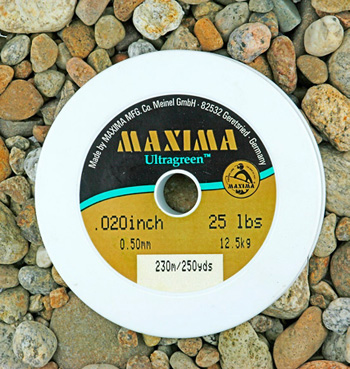
strength and abrasion resistance are fair, but I have more confidence in the Maxima Ultra green when it comes to knot strength and abrasion resistance. I dislike fluorocarbon for bobber fishing because it sinks, making it difficult to control the bobber. But I like this line’s endurance. Sunlight, heat, and the like do not deplete the line’s strength as they do to monofilament. I find I can get several seasons of use out of a single fill-up of fluorocarbon line, but I have to change mono lines after a week of fishing. The sunlight and heat seem to destroy the mono line’s strength.
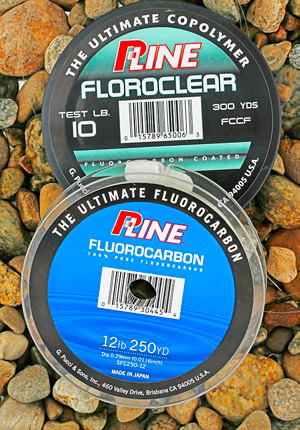
The super braids have little stretch and are very small in diameter compared to their strength. I like the Fire Lines and use them on both casting and spinning reels. The no-stretch feature allows you to easily set the hook, but this loss of elasticity can cause a lost fish if you pull too hard and tear out the hook. The super braid’s thinness allows crank baits to dive deeper. On a long line you can set the hook more easily. It is impervious to sunlight and heat related deterioration, so it has a long life expectancy. My reel spool holds much more line for the pound test in comparison to monofilament and fluorocarbon lines.
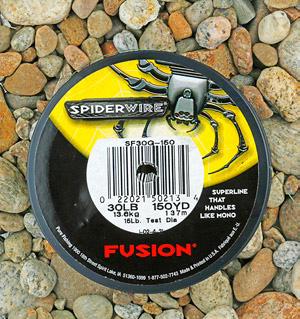
The pound test is important. For small fish, the lightest I use is four pound test. With a butter smooth drag, large fish can also be landed. I lose more tackle to snags when I use such light line because I cannot pull them loose without breaking the line. But four pound test casts light baits and lures far.
I most often use six to eight pound test on my spinning tackle. This casts well and is strong enough to pull loose some of my snags.
My favorite fluorocarbon size is ten pound test. It still casts well and is strong enough to land large fish. I use fluorocarbon for leader materials.
My most commonly used super line is thirty pound test Fire Line. I also use fourteen pound test Fire Line for ice fishing and whenever I need a very thin line.
There is a wide variety of lines on the market. It can become very confusing. I can’t buy and try them all, but the three that I have mentioned work very well for me. I purchase the mono in bulk spools and change out the last 50 yards after about five fishing trips. I buy the 250 yard filler spools in fluorocarbon and the standard spool size in Fire Line. These last two lines will serve me for several seasons.
Mono lines must not be exposed to light when stored or not in use. I think that the UV radiation causes these nylon monofilaments to deteriorate. Store them in a dark place.
Once a line has become twisted, it’s easy to unravel. Just pull out a hundred feet or less and allow the current to untwist the line. Use no weight but just the current’s flow to untwist it. If the line has cork screwed, tie the end to a post, walk out a hundred feet or so, and pull the line to stretch out the coils.
Always feel the last few feet of the line for abrasion. If it feels rough instead of slick and smooth, cut it back. Use only line that is smooth. Abrasions weaken the end of the line. This abrasion comes from rubbing the line over sharp objects such as rocks.
Spool your reels carefully so that you do not introduce line twists. Also spool the reel so the line is taut on the spool. Loose coils can cut down on the line’s casting ability.
A conventional bait cast reel is spooled by allowing the line spool to rotate out the line. Simply place a pencil in the line spool. Put pressure on this spool while you reel in the desired quantity of line. Having a helper is an aid.
A spinning reel would twist the line if you spool it in the same way as a bait casting reel. Watch the way the bait rotates as it reels in the line. When spooling a spinning reel, place the filler spool flat on the floor and let the line rotate out of the spool while you are reeling it in. Now the direction of this rotation is vital. You want to match up the bail’s rotation with the same rotation of line off of the filler spool. Spin reels spool on the line with a clockwise motion as you view the rear of the reel. The filler spool should be unwinding in this same clockwise direction as you view it while
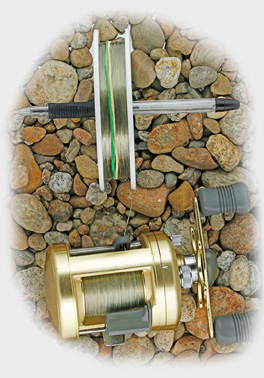
it’s lying on the floor.
This way you will not introduce line twisting when spooling. If you mix up the direction, you will suffer twisted line which is not only difficult to cast but easy to foul up on the rod tip and reel.
Now completely fill up both the bait casting and spinning reel spools, leaving about 1/16 inch of space between the lip of the spool and the level of the line. Full spools cast more easily and farther. If you overfill,
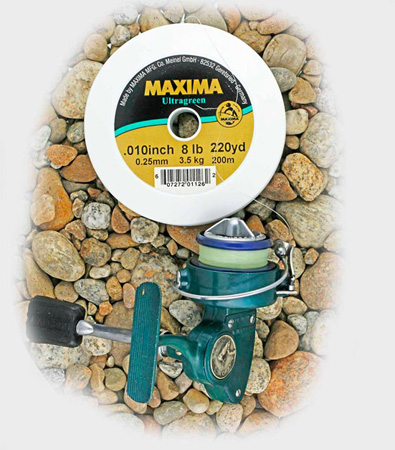
you will suffer some line tangles as you cast. Simply cut back the line to the proper level. I have a tendency to overfill my reels. It’s easy to correct. But under filling the reels is difficult to fix. You don’t want any knots that even come close to your maximum casting distance. If you under filled, you must take out at least 150 feet of line, cut it, and spool on enough to fill the spool. Re tie the cut off line and spool it with the hope that you have estimated it correctly.
Always discard old line properly. Don’t leave it afield where a small animal may become entangled. Discard the line directly into the garbage, although the new fluorocarbon’s life expectancy may be longer than those disposable diapers and Styrofoam cups in the land dump. Perhaps it would be better to burn the old line.
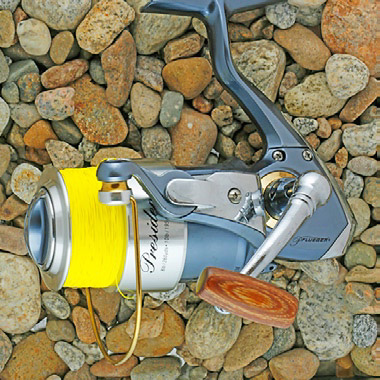
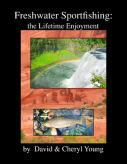
© 2026 The Gale Group, Inc. All rights reserved.
© 2026 Perigee Learning LLC. All rights reserved.
LoveTheOutdoors.com is owned and operated by Advameg, Inc. © 2026 Advameg, Inc.
Camping Adventures • Dutch Oven Cooking • Sports Knots
Fly Tying • Freshwater Fishing • Fly Fishing

